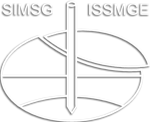Identifying porosity distribution and swell anisotropy of laboratory sedimented high plasticity clay through NMR imaging
Identifying porosity distribution and swell anisotropy of laboratory sedimented high plasticity clay through NMR imaging
When studying fundamental features of soil behaviour it is common to resediment or remould “artificial” soil samples under well-defined conditions to limit uncertainties caused by variability in soil structure. Therefore, the laboratory sedimented sample is a useful reference state for a given soil. However, the sedimentation process inevitably causes anisotropy which is previously linked to sedimentation structure. This is related to the anisotropic stress state of oedometric confinement used in laboratory sedimentation. As such anisotropy is unavoidable it is necessary to identify it. More troublesome is the potential unwanted heterogeneity caused by the separation of constituents during the sedimentation process. To investigate these two features, large (Ø20cm x 6cm) laboratory sedimented high plasticity clay discs were prepared. On both vertically and horizontally oriented subsamples at different locations in these discs, the porosity distribution was mapped through low field Nuclear Magnetic Resonance (NMR) imaging. This allowed verification of the level of homogeneity achieved by the laboratory sedimentation procedure. Further, the anisotropy of the discs was studied by measuring the free swell of the subsamples at the two orientations. The obtained results provide insights into the effectiveness of laboratory sedimentation for creating homogeneous reference soil samples and further exemplify the usefulness of NMR imaging in identifying initial porosity distribution and porosity evolution during swelling.
Emil Mejlhede Kinslev; Irene Rocchi; L. T. P. Meireles
18th European Conference on Soil Mechanics and Geotechnical Engineering (ECSMGE2024)
E - Environment, water and energy
